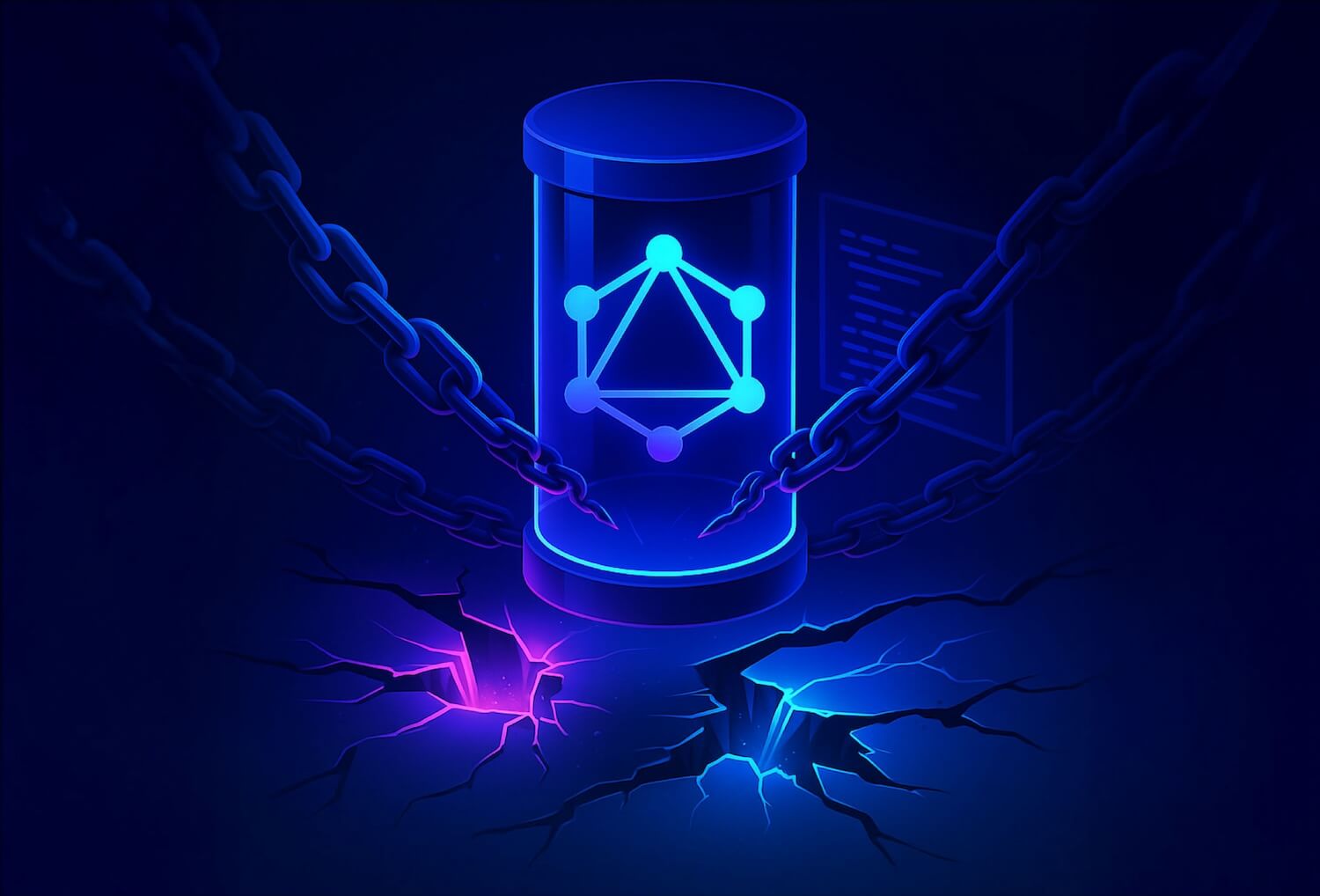GraphQL is a dream for developers, and a bit of a nightmare for infrastructure teams.
On the surface, it offers a clean solution to messy API sprawl. Instead of building, maintaining, and versioning dozens of REST endpoints, application developers can send a single query to a single endpoint and specify exactly the data they need. The front end becomes self-serve. The backend becomes more flexible. Development cycles speed up.
But as many companies adopting GraphQL are discovering, this flexibility comes with hidden operational costs that can erode both performance and budgets, especially at scale.
Why GraphQL Has Captured Developer Mindshare
Traditional REST APIs work well when application needs are predictable and changes are infrequent. Each endpoint is purpose-built: one for product details, one for pricing, and another for inventory. The client gets exactly what the server was designed to provide.
But in today’s world, where e-commerce product pages combine personalized pricing, dynamic inventory, shipping windows, reviews, and more, that RESTful rigidity can become a bottleneck. Developers either:
- Make multiple API calls, increasing latency and complexity.
- Or over-fetch with one large response and parse the data client-side, wasting compute cycles and bandwidth.
GraphQL solves this by flipping control to the client. Want just the product ID and inventory? Send a query for those fields. Need price and shipping details later? Send a different query. One endpoint, infinite combinations. That’s the promise—and the power—of GraphQL.
However, the moment those queries start generating production traffic, problems arise.
The Caching Problem Behind the Curtain
Caching is one of the most effective ways to improve web performance and reduce infrastructure costs. Traditional CDN and edge caching systems work by recognizing repeated requests—based on paths, query strings, or headers—and serving the same response again and again.
But with GraphQL, every query can be different. Two requests to the same endpoint may contain different query payloads and return different combinations of fields. Caching systems have no visibility into the body of the request, and the variability in responses makes full-response caching nearly useless, especially with CDNs that often evict content prematurely.
Worse still, once you begin personalizing GraphQL queries—for example, adding user-specific recommendations or account-based pricing—your cache hit ratio can plummet into the single digits.
It’s not uncommon for sites with heavy GraphQL usage to see cache hit rates drop from over 90% (with REST) to 15% or lower. And with that drop comes:
- Increased origin fetches
- Higher egress costs from cloud providers
- Reduced performance for users
- Ballooning CDN bills
We’ve seen this firsthand with major online retailers transitioning from big-box retail to digital-first strategies. A prominent electronics brand recently moved aggressively to GraphQL, resulting in over a dozen fragments per product page. The operational impact? Their CDN offload cratered, and so did their ROI.
Four Stages of Relief: Evolving Beyond Basic Caching
These pain points don’t mean GraphQL is broken, but they do demand a more intelligent approach to data delivery. Here’s a phased model for resolving the hidden costs of GraphQL, gradually improving performance, reducing infrastructure waste, and enabling long-term scalability.
1. Understand Full-Response Caching
This is the simplest approach: cache the entire response from a GraphQL query as one object. It’s supported by most CDN providers and is easy to implement.
But the effectiveness is wildly inconsistent.
In applications where query patterns are uniform—such as static product pages—it might yield a modest hit rate. But as soon as those queries vary or begin including user-specific data, cache fragmentation explodes.
Imagine 100 users querying the same product with slightly different field combinations. Your cache is now storing 100 versions of the same data—with only a 1% reuse rate.
That’s why full-response caching can only take you so far.
2. Embrace Partial Query Caching
This is where the real magic begins.
Most caching systems treat GraphQL responses as opaque blobs—storing the entire response as a single object and requiring an exact match to return it. But there’s a more intelligent approach: partial query caching.
Instead of caching whole responses, this method disassembles a GraphQL payload into its individual data fields—SKU, price, inventory, ship date—and stores each component separately. The next time a query comes in, the system checks for which pieces are already in cache and dynamically rebuilds the response using what’s available.
Example:
- Query A requests SKU and price
- Query B requests SKU and inventory
Even though the queries are different, SKU is common to both. If it’s already cached, it doesn’t need to be fetched again. Now, imagine scaling that approach across millions of requests—it significantly reduces backend load, improves latency, and minimizes cloud egress.
This form of intelligent caching starts to behave less like a simple key-value store and more like a lightweight NoSQL database—one that understands what it’s storing and how to reuse it. It bridges the gap between a cache and a data system, offering the flexibility of field-level granularity with the speed of edge delivery.
This is the approach taken by Harper, a distributed backend platform designed to solve exactly this challenge. Harper combines database and cache functions in one system, optimized for dynamic APIs like GraphQL. It allows you to store and retrieve structured data at the edge, with built-in support for partial query resolution.
Even if you’re not using Harper, the principle is broadly applicable: to scale GraphQL, you need smarter caching. Systems that understand the structure of your data—not just the shape of your requests—will unlock significant performance and cost gains without requiring app teams to change how they query.
3. Introduce Event-Driven Replication
Caching is great for reads, but what about freshness?
The next step is pushing the source of truth closer to the edge. Using event-driven replication (e.g., change data capture), Harper syncs data from origin systems as it changes. That means product inventory updates, pricing changes, and shipping window adjustments are propagated automatically, before the next user ever asks for them.
Now, GraphQL queries can resolve directly from Harper’s systems—not just cache—ensuring freshness with near-zero latency.
This hybrid model is more intelligent than a CDN and more scalable than sharding your primary database across edge locations. Harper handles:
- Data replication
- Freshness validation
- Real-time sync
- Query resolution via native GraphQL or Apollo interfaces
It becomes a caching layer and database in one, optimized for offload and developer agility.
4. Decentralize the Source of Truth
Once your edge cache is smart and your data is replicated, you reach an inflection point:
Why maintain a centralized backend at all?
In this final stage, the distributed Harper nodes become the authoritative source of data. Instead of pushing updates from a centralized system, you treat each edge node as a full-fledged peer. Data written or queried in one region is replicated globally, creating a true decentralized backend.
This is especially powerful for modern web architectures, where user experience and speed are paramount. The centralized origin—once a necessity for consistency—becomes a liability, introducing latency, failure modes, and management overhead.
Migrating to this model unlocks:
- 100% origin offload
- Near-instant performance for global users
- Simplified infrastructure and lower cloud costs
Of course, many organizations will still retain a centralized system during transition. That’s practical—and often necessary. But once the data is already living (and syncing) at the edge, shifting the center of gravity outward is a natural evolution.
The Options in Front of You
There are a few ways to build toward this architecture.
Option A: Stitch It Together Yourself
- Spin up a database system at each edge location
- Add a cache layer like Redis or Memcached
- Layer on an API gateway to handle GraphQL queries
- Manage the orchestration, replication, consistency, TTLs, and invalidation
This gives you full control—but at the cost of complexity. Every additional layer increases latency, introduces new failure points, and inflates operational overhead.
Option B: Choose a Unified Backend Platform
Harper is a fully integrated backend stack:
- Cache + database + GraphQL API in one
- Built-in support for partial caching and replication
- Native query resolution without hops between services
- Designed for distributed, dynamic applications
It’s the difference between assembling a backend from spare parts and plugging into a platform built for this exact problem.
Conclusion: Choose GraphQL Without Compromise
GraphQL is here to stay, and rightly so. It empowers developers, simplifies API design, and supports the flexibility that modern apps demand.
But to reap those benefits at scale, teams must rethink the backend infrastructure that supports GraphQL.
Traditional CDNs and caching models weren’t designed for dynamic, fragmented queries. The hidden costs—missed caches, origin traffic, cloud egress—can quietly undermine your performance and budget.
The solution isn’t to abandon GraphQL. It’s to evolve how we cache, replicate, and serve the data it queries.
Harper offers a unified, distributed platform to do just that. Whether you’re starting with partial caching or shifting toward full decentralization, Harper helps you move at your pace, without compromising on performance or complexity.Ready to scale GraphQL without scaling your infrastructure bill? Talk to Harper about making your GraphQL API edge-native.







.png)





.png)
